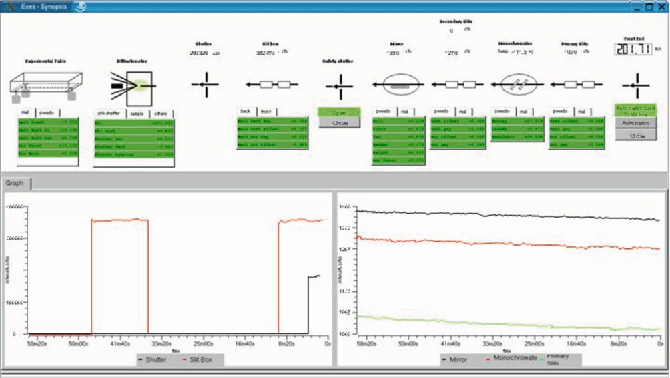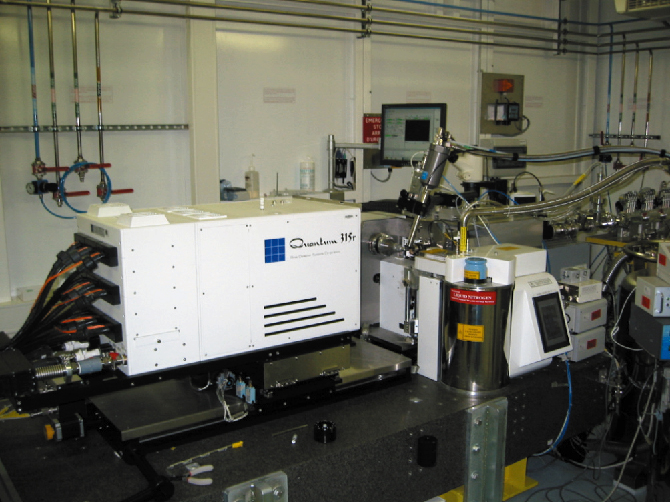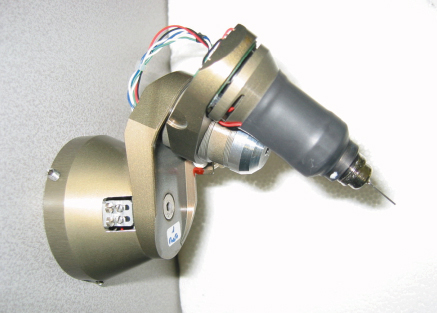- Home
- Users & Science
- Scientific Documentation
- ESRF Highlights
- ESRF Highlights 2005
- Structural Biology
- Continuing Automation of ESRF MX Beamlines
Continuing Automation of ESRF MX Beamlines
Modern synchrotron-based macromolecular crystallography facilities must be extremely reliable, user friendly and capable of very high throughput data collection. The best means of ensuring this goal is to enable such beamlines to function automatically. Macromolecular Crystallography (MX) facilities are particularly amenable to automation as they specialise in one technique that is repeated many times a day, namely the collection of high quality single crystal diffraction data. Automation procedures for MX beamlines should address several aspects of an experiment: the provision of the X-ray beam onto the sample; the mounting and dismounting of samples onto the goniometer; the characterisation of crystal diffraction quality and subsequent data collection and processing procedures. ESRF staff in collaboration with the EMBL Grenoble out-station Instrumentation group and other European institutes have made significant contributions to all of these areas [1, 2].
On ID23-1 a new instrument control system analyses information from various instrument position monitors and detectors so that an optimal X-ray beam can be delivered to the sample. A graphical overview, shown in Figure 89, presents the instrument status. Now that the new control system has been thoroughly tested, it will be adopted by the other ESRF MX beamlines during 2006.
 |
|
Fig. 89: Diagnostic display on ID23-1. |
A new generation of robotic sample changers (SC3, Figure 90) that were developed and built in Grenoble are now installed on all seven of the ESRF MX beamlines [1]. These sample changers allow automation of the mundane and time consuming procedure of mounting and dismounting a crystal on the goniometer. Additionally, the SC3 robots are equipped with CCD cameras and barcode readers, together they read the SPINE standard two-dimensional datamatrix codes etched on the bases of the sample holder contained in the robot. This allows each sample to be identified and, in conjunction with the DNA software and the ISPyB Laboratory Information Management System, provides a means for sample tracking before, during and after an experimental session. These tools also provide the basis for a data collection pipeline (DCP) developed at the ESRF [2]. The DCP allows the automatic screening of the diffraction quality of the entire contents of a sample changer and (when coupled with a Data Ranking Module implemented in DNA) allows the automatic selection of the “best” crystal from which to collect data for the project in hand.
 |
|
Fig. 90: ADSC Q-315r detector and sample changer (SC3). |
The collaboration between ESRF and EMBL-Grenoble has been instrumental in the successful development of the mini-Kappa goniometer head (Figure 91). This device will improve the way diffraction data for MX is collected at the ESRF, particularly when a small anomalous signal needs to be measured accurately. When such devices are used on the beamlines (ID23-1, ID29, ID14-4) newly equipped with the ADSC Q-315 detector (Figure 90) they will also provide great benefit to scientists studying biomolecules with large unit cells.
 |
|
Fig. 91: Mini kappa goniometer. |
Taken as a whole, the recent developments at the ESRF MX beamlines mean that they now provide an outstanding framework on which MX experiments can be performed.
Principal Publications
[1] F. Cipriani et al., Automation Instrumentation for High Throughput Macromolecular X-ray beamlines, Submitted to Acta Cryst D.
[2] A. Beteva et al., High throughput sample handling and data collection at synchrotrons: embedding the ESRF into the high throughput gene to structure pipeline, Submitted to Acta Crystallographica Section D - Biological Crystallography.
Authors
X. Thibault
(on behalf of the Joint Structural Biology Group (JSBG) of the ESRF and the EMBL Grenoble Outstation)



